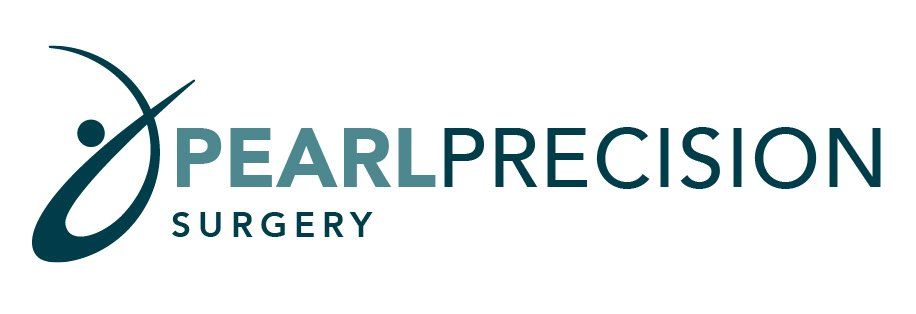Dos and Don’ts of Gynecology in the ASC Setting: Factors that lead to improved outcomes and reduced costs

BY ROBERT KURTZ | MARCH 2022
Over the next several years, Richard Rosenfield, MD, a gynecologist and founder of Pearl SurgiCenter in Portland, Oregon, expects to see significant changes in gynecologic surgeries being performed in the ASC space. “It has taken a long time to get here, but now there is a terrific opportunity for those of us working in the vertical.”
Success, however, is not assured, Rosenfield says. “A lot needs to happen if we want to continue expanding access to women’s surgical services so we can further improve outcomes and reduce costs.”
Gynecology Dos
Focus on team building
Any practice looking to bring gynecology into an ASC should prioritize assembling a strong clinical team, Rosenfield suggests. “It has been shown time and time again that having a team familiar with each other and working together on a regular basis will be the key to success in the outpatient space.”
That kind of team building has been essential for Texas Health Women’s Specialty Surgery Center Dallas in Dallas, Texas, and its more than 50 gynecologists on staff, says President Vicki Schultz, RN, CASC. “We have worked hard to place the right people with the expertise needed to scrub and perform gynecologic procedures with our surgeons. Our surgeons describe our scrub technicians as being on the level of an assistant.”
Ensure adequate case volume
Surgeons should possess clinical skills that permit most of their procedures to be suitable for the ASC, says Hugo Ribot Jr., MD, a founder and medical director of the Georgia Advanced Surgery Center for Women in Cartersville, Georgia. “A lot of doctors do minor procedures, like dilation and curettage, tubal ligations and laparoscopic removal of an ovary, but they do not perform bigger procedures, like hysterectomy or a sacrocolpopexy, to fix a prolapse as same-day procedures. Most doctors lack the surgical volume necessary to support an ASC with only minor procedures like hysteroscopy, tubal sterilization and endometrial ablation.”
Negotiate carve-outs
Securing carve-outs for some procedures will be essential to ensuring their financial viability. “If you rely on what commercial payers usually try to give you first, which are grouper rates and typically barely above Medicare, you will never make enough money to cover your overhead,” Ribot says.
Be prepared for uphill battles, he adds. “We have begun performing laparoscopic radiofrequency ablation of fibroids, which is a minimally invasive, uterus-conserving procedure that shrinks and largely inactivates fibroids. Thus far, I have only been able to get one of the five major commercial payers to give us a carve-out for it.”
Leverage data
If you hope to make meaningful progress with payers, come to the negotiating table armed with data, Rosenfield says. “You need easily interpretable data that looks at historical claims, outcomes and quality metrics. When you do that, you can have an intelligent discussion about coverage, reimbursement and creating surgical bundles. It is impossible to move the needle without data.”
Look beyond gynecology
When Texas Health Women’s Specialty Surgery Center Dallas opened in 2009, it focused on gynecology. Now the specialty makes up about 60 percent of its case volume. “Our gynecologists have enhanced the opportunity to open our doors to other specialties and services, including urology and general and cosmetic surgery,” Schultz says. “Many of our physicians team up to perform combo cases with other specialties. These complementary specialties have really helped our ASC soar.”
Other complementary specialties include bariatric surgery, plastic surgery and gastroenterology, Rosenfield adds. “There are strong synergies in the ASC space when you focus on the women’s healthcare vertical, which has largely been ignored for decades.”
Prioritize postoperative care
Preventing nausea and pain after surgery is a priority at the Georgia Advanced Surgery Center for Women, Ribot says. The ASC has been refining enhanced recovery after surgery (ERAS) protocols since 2006. “In gynecology, if you know how to do targeted injections of long-acting local anesthetics, patients wake up with little to no pain, even after major procedures,” he says. “The medication may cost you a little more out of pocket, but it can be a difference-maker in performing larger surgeries in an ASC setting. We have not had a readmission for pain or nausea in years with our protocol.”
Gynecology Don’ts
Don’t limit yourself
Look for opportunities to bring appropriate new gynecologic procedures into your ASC. “We started out by performing smaller procedures, but quickly ramped up to laparoscopic hysterectomies,” Schultz says. “We are always evaluating the opportunity to add additional technology to enhance our current specialties. We utilize 23-hour observation for our patients, which has allowed us to gain more cases from the inpatient environment. We have established patient selection guidelines to ensure patients are safe candidates for surgery in an ASC.”
Don’t keep physicians on the sideline
Make sure to involve your surgeons in purchasing, advises Rosenfield. “Get them in front of the vendors and show them there is an enormous variety of equipment they might not be aware of that is better ergonomically suited for the type of surgery they perform and can help them become more efficient.”
Don’t overlook new patient and payer opportunities
One way the Georgia Advanced Surgery Center for Women has grown is to attract patients from outside its local market. “Since 2014, we have had a steady stream of travel surgery patients who come in from out of state because we are able to offer package prices, like bundled rates,” Ribot says. “These are good rates for us and patients receive great care.”
Rosenfield says his ASC has found success with the Employee Retirement Income Security Act (ERISA) of 1974 self-insured plans. “A lot of large companies throughout the country are looking for more aggressive solutions for their employees. Thanks to the recent hospital and contract transparency laws, we can have more frank conversations with insurers about costs and our ability to save thousands of dollars on average per procedure.”
Don’t dismiss low-volume surgeons
While low-volume surgeons might not be able to power a gynecology program, they can provide great value to an ASC, Rosenfield says. “Match them up with a high-volume surgeon who can provide mentorship and possibly an opportunity for advancement of skills versus telling them they should not operate in an ASC. We tell them they would do better in our ASC if they were part of our team every day.”
Making Sound Decisions
While gynecology has many dos and don’ts specific to the specialty, some keys to success are similar to that of other ASC specialties, Rosenfield says. “Work with the right group of doctors and ensure that group is working with the right group of patients. To get commercial payers or even new surgeons on board, it is really important to demonstrate a reproducible and scalable ability to perform higher acuity cases in your ASC.”
Schultz keeps a close eye on anything that can affect the ASC’s bottom line, from costs per case to physician recruitment opportunities. “We are constantly trying to improve and grow. We are focused on internal customer service and anticipating our surgeons’ needs before they even think of them.”
For Ribot, the value of staff performance cannot be overstated. “You need great staff in your ASC who are used to recovering these types of patients and getting them out safely and promptly. Your staff are essential for growing and adding the gynecologic procedures that are steadily making their way into ASCs.”
Technologies ASCs Need for Gynecology
One of the keys to gynecology success for Texas Health Women’s Specialty Surgery Center Dallas in Dallas, Texas, has been the enthusiasm of its surgeons to be early converts, says President Vicki Schultz, RN, CASC. “They are always willing to try new techniques, devices and equipment by frequently evaluating new products, which allows us to remain state of the art.”
An example of equipment that Schultz says has strengthened the ASC’s quality of care is an insufflation management system that lowers the amount of carbon dioxide (CO2) needed during laparoscopic cases. “Sometimes patients can experience significant pain from having CO2 inflated into their abdomen. By decreasing that amount, there is reduced pain, postoperative nausea and need for medication.”
On a more fundamental level, ASCs adding gynecology will need equipment like endoscopic towers and laparoscopic instrument sets, says Richard Rosenfield, MD, a gynecologist and founder of Pearl SurgiCenter in Portland, Oregon. Before purchasing that technology, he advises, think about your plans for the ASC. “That equipment can typically be used by multiple specialties,” he says. “We see a lot of synergy for gynecology with specialties like general and bariatric surgery for operating room setup. When looking to launch gynecology, think about the vessel-sealing technology and other instruments that could be shared by existing specialties or those you may eventually add.”
As the Georgia Advanced Surgery Center for Women in Cartersville, Georgia, has added more complex procedures requiring larger incisions, the ASC has leaned on another type of technology. “With ultrasound, you can put in a transversus abdominis plane (TAP) block of the abdominal wall with a long-acting anesthetic,” says Hugo Ribot Jr., MD, one of the founders of the ASC and its medical director. “Pain is so well-controlled that even patients with a big incision can still go home the same day of their procedure.”
The “elephant in the room” for gynecology technology is robotics, says Rosenfield. While this technology is making its way into ASCs, he says the price is often a deterrent for centers without deep pockets. “Where I think the excitement lies is in the innovative, disruptive technology we will see on the horizon,” he says. “For example, there is a Canadian group of robotic engineers trying to develop robotic technology for the ASC space that is far more cost-effective than current options on the market. We will hopefully see advancements that can allow us to bring robotics into more surgery centers.”



